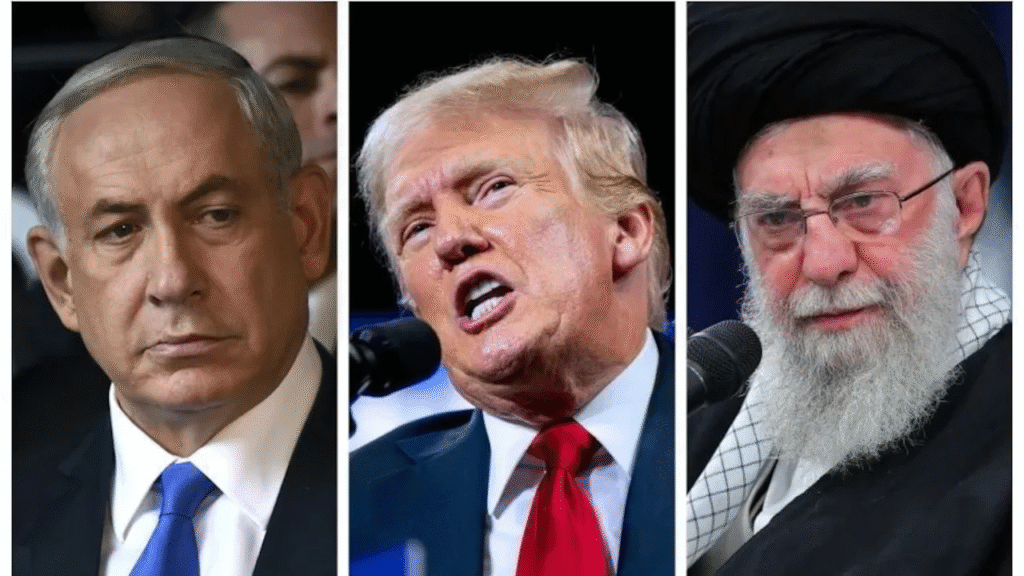Stock Futures Surge Over 200 Points After Trump Announces Iran-Israel Ceasefire Deal
Stock futures soared over 200 points after Donald Trump announced a ceasefire between Iran and Israel, signaling potential market stability amid global tensions
On June 17, 2025, U.S. stock futures leapt more than 200 points after former President Trump declared that a ceasefire between Iran and Israel was in effect. This seismic move reflected investor relief amid a volatile backdrop defined by military strikes, regional tension, and global economic headwinds.
Let’s break down the surge—what unfolded, why it matters, and what comes next for global markets.
Futures Reaction: Pre-market contracts for the Dow jumped ~200 points—equivalent to roughly 0.6–0.8%—and S&P 500 futures mirrored the rally.
Volatility Index Response: The CBOE’s VIX volatility gauge eased as traders took profits on safe-haven assets like bonds and gold and re-entered equities.
Oil Prices Slide: Brent crude slid ~2%, while WTI dropped ~1–2% amid easing risk-premium on Middle East supply fears
Israel struck Iranian nuclear facilities; Iran responded with missile barrages. Markets rallied on safe-haven assets—gold, bonds, dollar—while equities and oil spiked.

Trump warned Iranians in Tehran to evacuate, escalating fear of wider conflict and sending futures into turbulence.
Speculation swirled around U.S. military involvement, pushing defense stocks higher but keeping broad market sentiment cautious
Trump’s ceasefire announcement soothed investor nerves, removing the immediate threat of escalation.
Oil market prompted price drops: Brent fell around 2.1%, reflecting eased fear of supply disruption via Strait of Hormuz.
Equity futures responded positively as risk-on sentiment returned—markets view geopolitical risks as temporary, and hope guides the near-term outlook.
Amid peak summer demand, oil had surged ~9% earlier; moderation on ceasefire news immediately pushed prices lower .
US shale independence continues to insulate from Middle East supply disruptions.
Lower oil supports sectors like airlines, transport, and consumer discretionary, helping fuel equity gains.
Prior to the ceasefire, gold and Treasury yields rose as investors fled to safety.
Ceasefire hopes sparked a rotation out of defensive assets into equities and improved risk-taking.
Defense stocks, including Lockheed and Northrop Grumman, surged roughly 3% week-over-week despite conflict fears.
Markets anticipate sector-specific boosts during times of instability—even amid broader equity recovery.
Potential U.S. Involvement: With reports expecting possible American intervention by July, any decision—even mild—could rattle markets.
Oil Price Resilience: Though down ~2%, Brent remains above $75. A disruption could still push it to $85–100/barrel.
Real-time Conflict Diary: Israel’s Operation Rising Lion continues; a single misstep could re-ignite risk-off market behavior
Financial markets are also tuning into Fed signals as inflation subsides; a geopolitical easing supports the case for potential rate cuts.
Global trade uncertainty—Trump’s intermittent tariff threats—adds a second layer of geopolitical risk that could dampen optimism.
Short-Term: Allocation tilted toward equities (financials, industrials, discretionary), as reduced Middle East risk favors risk-on positioning.
Commodity Watch: Crude within the $75–85 range becomes a key risk marker—any sustained rise may signal renewed turmoil.
Defensive Posture: Bonds and gold remain strategic hedges in case of renewed flare-ups.
Global Macro: Geopolitics are no longer binary triggers; markets adapt faster with diversified, information-optimized frameworks.
Stock futures surged over 200 points because Trump’s ceasefire announcement reduced the immediate fears of war, lowered oil risk premia, and improved investor sentiment. With energy prices softening and risk assets gaining favor, markets caught a relief rally. Still, with Trump’s broader tariff pressures and ongoing Middle East operations, uncertainty isn’t fully cleared—markets remain in a cautious optimism setting.








